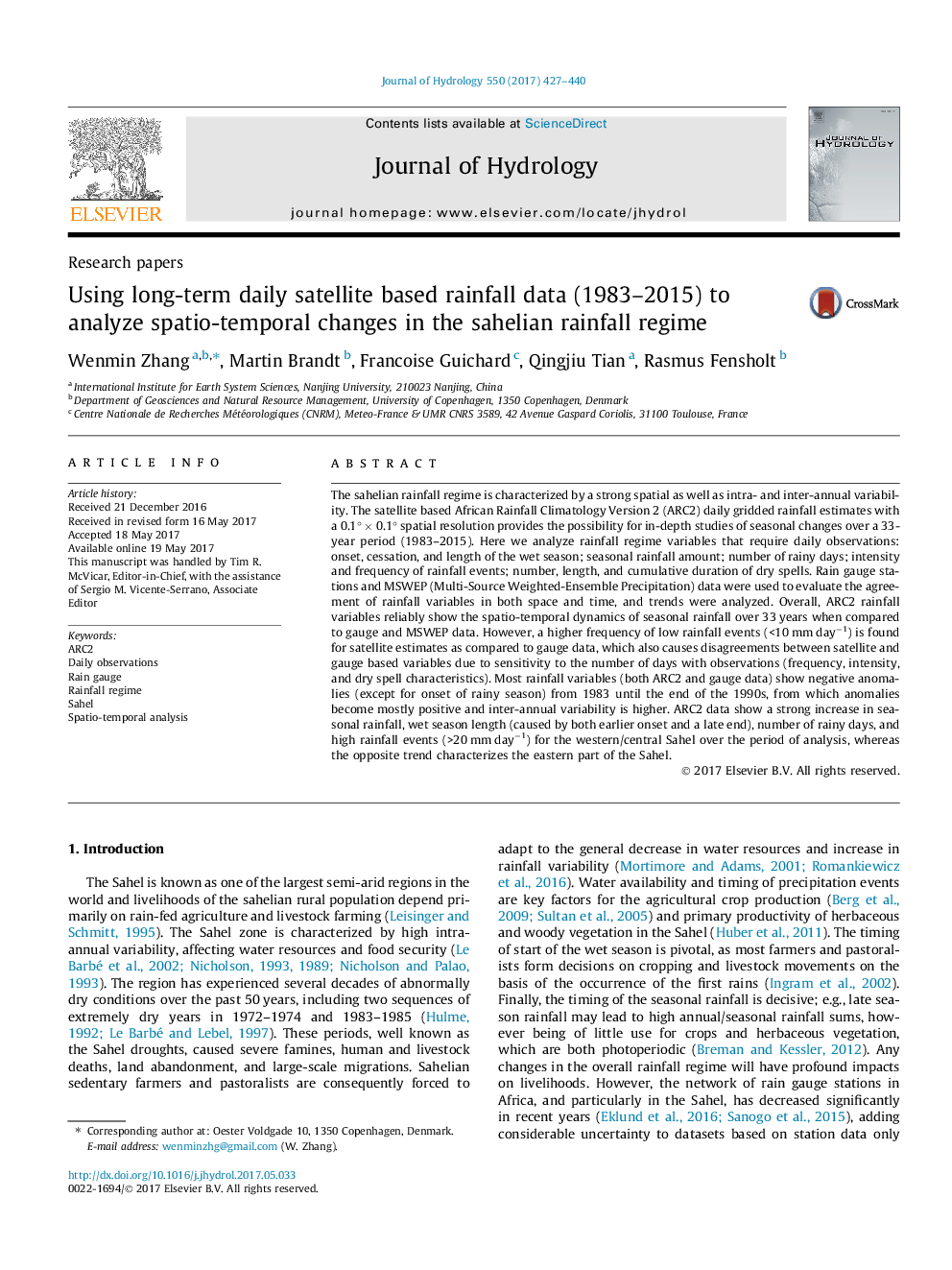| کد مقاله | کد نشریه | سال انتشار | مقاله انگلیسی | نسخه تمام متن |
|---|---|---|---|---|
| 5770767 | 1629904 | 2017 | 14 صفحه PDF | دانلود رایگان |
- Daily ARC2 data were used to derive time series of seasonal rainfall variables for Sahel.
- ARC2 rainfall variables were evaluated against rain gauge and MSWEP datasets.
- Variables agree between datasets except for number of small events and dry spells.
- Increased inter-annual variability was observed for variables since year 2000.
- Strong positive trends in variables were found primarily in western/central Sahel.
The sahelian rainfall regime is characterized by a strong spatial as well as intra- and inter-annual variability. The satellite based African Rainfall Climatology Version 2 (ARC2) daily gridded rainfall estimates with a 0.1° Ã 0.1° spatial resolution provides the possibility for in-depth studies of seasonal changes over a 33-year period (1983-2015). Here we analyze rainfall regime variables that require daily observations: onset, cessation, and length of the wet season; seasonal rainfall amount; number of rainy days; intensity and frequency of rainfall events; number, length, and cumulative duration of dry spells. Rain gauge stations and MSWEP (Multi-Source Weighted-Ensemble Precipitation) data were used to evaluate the agreement of rainfall variables in both space and time, and trends were analyzed. Overall, ARC2 rainfall variables reliably show the spatio-temporal dynamics of seasonal rainfall over 33 years when compared to gauge and MSWEP data. However, a higher frequency of low rainfall events (<10 mm dayâ1) is found for satellite estimates as compared to gauge data, which also causes disagreements between satellite and gauge based variables due to sensitivity to the number of days with observations (frequency, intensity, and dry spell characteristics). Most rainfall variables (both ARC2 and gauge data) show negative anomalies (except for onset of rainy season) from 1983 until the end of the 1990s, from which anomalies become mostly positive and inter-annual variability is higher. ARC2 data show a strong increase in seasonal rainfall, wet season length (caused by both earlier onset and a late end), number of rainy days, and high rainfall events (>20 mm dayâ1) for the western/central Sahel over the period of analysis, whereas the opposite trend characterizes the eastern part of the Sahel.
Journal: Journal of Hydrology - Volume 550, July 2017, Pages 427-440
